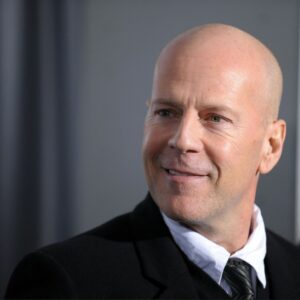Anna Kendrick, a well-known actress and singer, has captivated audiences with her versatility and charm in films such as Pitch Perfect, Up in the Air, and Into the Woods. A fixture in Hollywood for over a decade, Kendrick has become an influential figure in the entertainment industry, not only for her acting talent but also for her outspoken views on diversity. While many actresses and actors remain silent on social issues, Kendrick has made it clear that she believes the film industry must do more to champion inclusivity and representation.
Throughout her career, Kendrick has actively advocated for diversity both in front of and behind the camera. Her voice has been an important one in the ongoing conversation about how Hollywood can better reflect the world we live in. Kendrick’s work as an advocate for underrepresented groups has made her a strong ally to those seeking a more inclusive, diverse cinematic landscape. In this article, we will explore Anna Kendrick’s perspectives on diversity in the film industry, its significance, and the steps necessary to create a more inclusive future for cinema.
The Significance of Representation
For Kendrick, the importance of diverse representation in films cannot be overstated. “There is no such thing as too much diversity,” she has said in interviews, stressing that films need to reflect the rich, varied fabric of the world in which we live. Kendrick’s perspective on diversity extends beyond mere tokenism; it is about ensuring that all voices are heard, not just the dominant, privileged ones.
Diversity in cinema allows a multiplicity of experiences to be brought to the forefront, contributing to a richer, more nuanced portrayal of human stories. Kendrick has long been an advocate for films that feature a wide range of voices, faces, and narratives. For her, films that portray diverse communities are not only important for marginalized groups to see themselves represented but also for the majority population to broaden their understanding of the world. When people from different backgrounds, ethnicities, genders, and experiences are depicted authentically, it challenges stereotypes and promotes greater understanding between diverse groups.
The importance of representation in film is not just about equity; it is also about the cultural and societal impact it has. Movies have the power to shape how people view the world, influencing social and cultural norms. When the stories of underrepresented people are told, they foster a deeper sense of empathy and appreciation for those who have historically been sidelined. As Kendrick has pointed out, the impact of seeing oneself on screen cannot be underestimated. Whether it’s an African American character portrayed in a nuanced, humanizing way or a LGBTQ+ character who is allowed to be fully realized beyond clichés, representation allows audiences to feel seen and understood.
The Impact on Audience and Society
Kendrick’s belief in the power of diversity is rooted in her understanding of the emotional and social impact that films have on audiences. Film, she believes, is one of the most powerful tools for empathy and understanding. By showcasing a variety of experiences, movies allow viewers to connect with people from all walks of life. This connection fosters understanding, compassion, and tolerance – values that are essential in today’s increasingly globalized and interconnected world.
Films with diverse casts and stories can also help break down long-held misconceptions and stereotypes. For example, when a film presents a Black woman in a leading role, not as a sidekick or secondary character but as the protagonist, it challenges the prevailing image of who can be the “hero” in a mainstream film. Similarly, films that explore issues of gender identity, disability, and cultural differences provide an opportunity for audiences to gain insight into experiences that might otherwise be foreign to them. Through this exposure, viewers are more likely to become empathetic and better understand the challenges that others face.
Kendrick herself has acknowledged the profound effect that films have on her own worldview. As she told one interviewer, “Movies are how we learn about people. They teach us who we can be, who we should be, and who we don’t want to be.” The ability of cinema to inspire and educate audiences is not something Kendrick takes lightly. She is a staunch proponent of using that power for good – to dismantle harmful stereotypes, create empathy, and reflect the diverse world we live in.
The role of cinema in shaping social and cultural norms is undeniable. Films have the potential to set trends, challenge outdated views, and open the door to new ideas. This is especially true in a globalized world, where films are not just consumed by local audiences but are shared across countries and cultures. When a film becomes a global phenomenon, it has the power to influence perceptions on a massive scale. Kendrick recognizes that this global influence should be used to promote inclusivity, with filmmakers using their platform to tell diverse stories and shine a light on voices that have traditionally been ignored.
Challenges Faced in the Film Industry
Despite the growing conversation about diversity in Hollywood, Kendrick is quick to acknowledge that significant challenges remain. One of the primary obstacles to achieving meaningful diversity in the film industry is the entrenched dominance of a narrow group of decision-makers in positions of power. Film studios, producers, and executives have traditionally been overwhelmingly white and male, and this has influenced the types of films that get greenlit and the stories that are told.
Kendrick’s advocacy for diversity is not limited to casting. She is also an outspoken critic of the lack of diversity behind the scenes. She points out that while there may be progress in terms of representation on-screen, the same cannot be said for the people making those decisions. The film industry, she argues, needs to open up leadership roles to people from underrepresented communities. The decision-making process needs to include a wider range of perspectives in order to ensure that films reflect the diversity of the world outside of Hollywood.
Another challenge Kendrick highlights is the pressure for marginalized groups to conform to mainstream expectations. Often, films that feature diverse characters are still written, directed, and produced by individuals who don’t share the experiences of the communities being portrayed. Kendrick has spoken about the importance of authenticity in storytelling, noting that stories about underrepresented groups should be told by people who truly understand those communities. She advocates for empowering diverse creators to take control of their own narratives, rather than allowing others to shape their stories from an outside perspective.
Kendrick’s Call for Change and Action
Anna Kendrick is not just interested in highlighting problems; she is committed to driving change. She has called on filmmakers, producers, and film studios to make an investment in diverse talent and stories. Kendrick has stressed that the future of cinema depends on the industry’s willingness to embrace diversity and inclusion. She believes that the more inclusive the industry becomes, the more innovative, fresh, and authentic its storytelling will be.
One of Kendrick’s key calls to action is for Hollywood to invest in emerging filmmakers from underrepresented backgrounds. In addition to hiring actors from diverse communities, she encourages the industry to nurture diverse talent at all levels, from directors and producers to screenwriters and technicians. By diversifying the talent pool, Kendrick argues, Hollywood can create more authentic, varied, and dynamic films.
Kendrick also believes that the film industry needs to embrace diverse narratives. She has been vocal about her support for films that focus on non-Western perspectives, and she advocates for stories that reflect a wider range of experiences beyond the conventional. In this way, Kendrick sees diversity not as a “trend” but as a necessary evolution for the industry. If Hollywood is to remain relevant and continue to captivate audiences, it must evolve to reflect the world in all its complexity.
Conclusion: Moving Towards a More Inclusive Film Industry
Anna Kendrick’s advocacy for diversity is a call for change in a film industry that has long been criticized for its lack of representation. Her views on the importance of diverse voices, faces, and stories in cinema are not just about equity; they are about using the power of film to foster understanding, empathy, and connection in a fractured world. While challenges remain, Kendrick’s call to action offers a roadmap for how the industry can move forward, urging filmmakers and studios to embrace the rich diversity of the world and invest in the talent and stories that have long been overlooked.
As we move toward a more inclusive future, it is vital that the conversation around diversity in film continues. The impact of diverse representation in cinema is undeniable, shaping not only how we see ourselves but how we understand each other. By pushing for change, Anna Kendrick is helping to pave the way for a more inclusive and innovative future for Hollywood. Through her work and her advocacy, she is helping to ensure that the next generation of filmmakers and viewers will have a world of stories to explore, reflect upon, and be inspired by.





